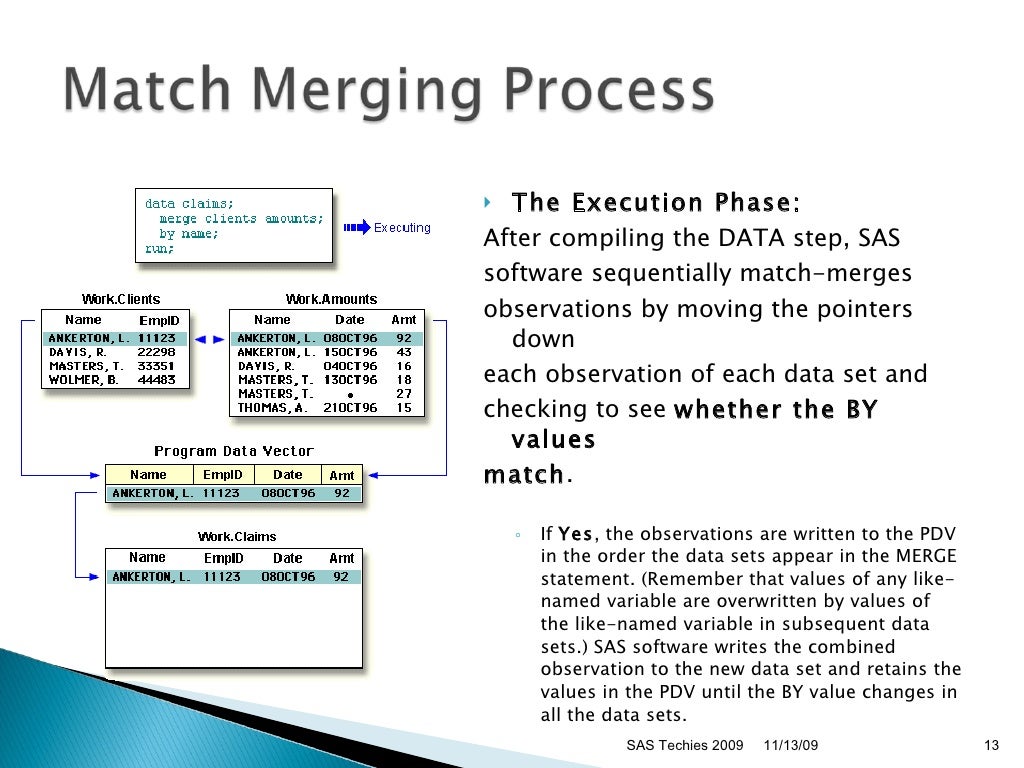

Notice that only the rows where a value exists in the first dataset and not the second dataset are returned. However, we can use IN statements to only return the rows where a value exists in the first dataset and not in the second dataset: data final_data When merging two datasets in SAS, you can use the IN statement to only return rows where a value exists in a particular dataset. If we use the following merge statement to merge the two datasets based on the value in the ID column, all rows will be returned from both datasets: /*perform merge*/ Suppose we have the following two datasets in SAS that contain information about sales associates at some company: /*create first dataset*/ 7.2.3 Match-Merging Match-merging combines observations from two or more SAS data sets into a single observation according to the values of one or more. Example: Merge Two Datasets in SAS Using If A Not B
#Data merge in sas how to#
The following example shows how to use this syntax in practice. And that the data sets in use are sorted by. Merge Build an enterprise imaging environment with a scalable. Match-merge requires that at least one variable is common to each data set. This particular example merges the datasets called data1 and data2 and only returns the rows where a value exists in data1 and not in data2. Accelerate clinical trials with a unified, cloud-based clinical data management system. And the same for y.You can use the following basic syntax to merge two datasets in SAS and only return the rows where a value exists in the first dataset and not the second dataset: data final_data Input data sets must be sorted by the common variable (s) that will be used to merge. Prerequisites for a SAS Merge Input data-sets must have at least one common variable to merge with same name (In our case we have CUSTOMERID). Other applications include using more than one BY variable, merging more than two data sets, and merging a few observations with all observations in another data set. Lets go for SAS Merge (Inner Join) using IN Options. But what if we could merge the data using a datastep instead of an SQL The aim of this paper is to show exactly this. A many-to-many merge is usually done using a PROC SQL call. The common format of the data when it is merged is either a 1-to-1 or 1-to-many. This section describes basic uses of MERGE. Merging two datasets is a common task carried out by a SAS Programmer. x will have output 1 if the By-variable exists in data-set1, 0 otherwise. The MERGE statement is flexible and has a variety of uses in SAS programming. Two new column x and y will be generated.
#Data merge in sas code#
MERGE By: BY in Merge statement is similar to JOIN in PROC SQL: DATA data-set Use this interactive tool to develop SAS (version 9.3 or higher) and Stata code to merge multiple iterations of HINTS data, as well as generate example/template. If you instead use multiple SET statements, the final data set will have minimun number of obs.

of final data set will be equal to the maximum number of obs. MERGE statement would keep all the observations from the data sets.


 0 kommentar(er)
0 kommentar(er)
